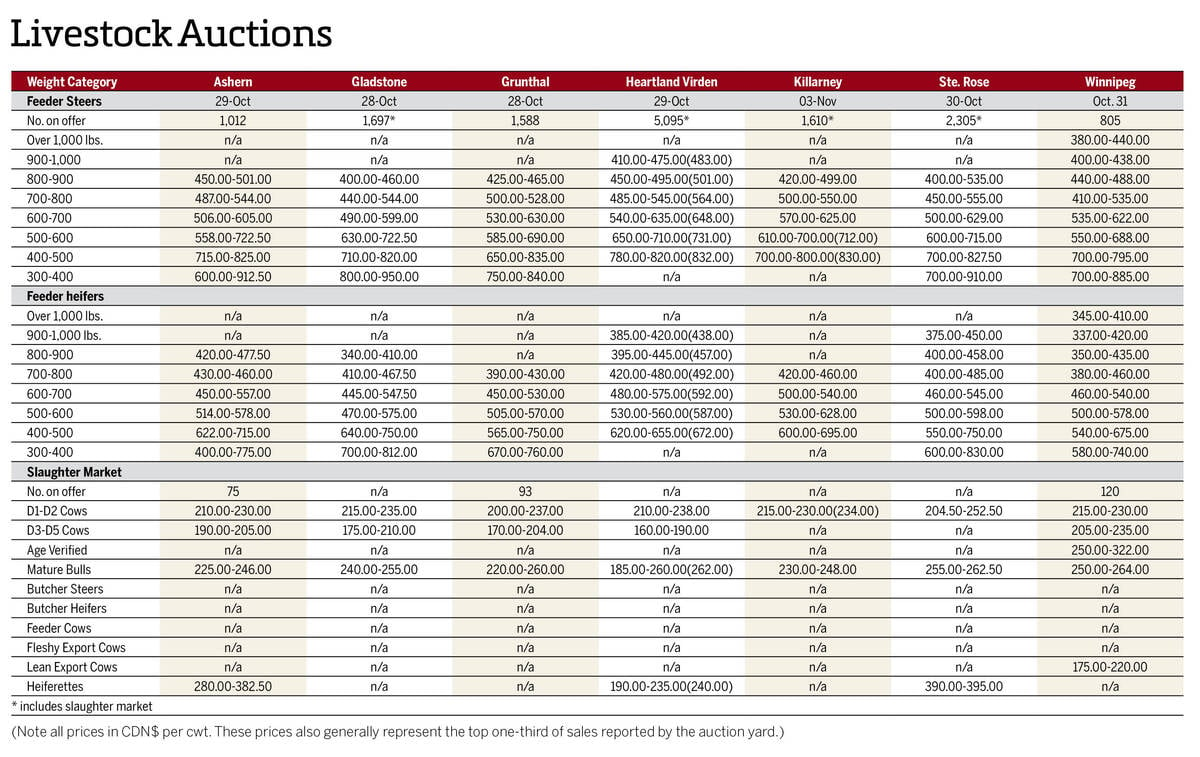In the world of commodities, crude oil rules, even when it comes to agriculture.
It is needed to power the tools and the equipment to seed, harvest, transport and, in some cases, turn crops into final products. Some of those products are also in competition with crude oil itself. As a result, oilseeds and vegetable oils are intrinsically linked when it comes to prices.
May canola went from a contract low of $575 per tonne in mid-February to a two-month high of $652.10 on March 21. On April 4, it settled at $636.60. At the same time, crude oil prices also hit multi-month highs.
Read Also

Manitoba cattle prices, Nov. 4
Manitoba cattle sale prices for the week of Oct. 28 to Nov. 4, 2025.
For the first time since October, Brent crude oil surpassed US$91 per barrel, while West Texas Intermediate (WTI) traded above $86/barrel. Ukrainian attacks on Russian oil refineries, Iran’s threats of attacks on Israeli diplomats, stronger Asian demand and the OPEC+ alliance’s recent decision to extend voluntary production cuts of 2.2 million barrels per day until June have fuelled crude’s recent rise.
OPEC+ is surely happy to see crude oil prices at higher levels, as are the oilseeds markets. As long as crude oil stays elevated, demand for cheaper biofuels will also grow, including those derived from soy and canola. Crude oil, soyoil and canola all rose in price over the past month.
Adverse geopolitical events will always support prices, but will crude oil’s return to these levels become a sojourn rather than a stay?
There are signs that crude oil is overbought. As of April 4, WTI had a relative strength index of 72, while Brent’s was at 75.7. Both of their nearby contracts ended the day $10/barrel above their respective 100-day averages. Considering Brent’s average price in 2023 was $82.10/barrel, oil importing nations, especially China, may choose to cut their purchases if prices stay this high. Even greater is the chance those prices will worsen inflation.
Crude oil prices are just one factor affecting canola prices. Growing conditions on the Prairies, soyoil’s performance and the strength/weakness of the Canadian dollar can guide the oilseed in any direction. But crude oil is often in a balancing act. If it feels the need to ease off, expect other commodities, including canola, to follow.
















